Abstract
Previous studies with isolated chloroplasts have indicated that Cl− is an essential cofactor for photosynthesis. Considerable support for the postulated Cl− requirement in photosynthesis came from the observation that Cl− is essential for growth. Data are presented which show that a 60% reduction in growth which occurred in Cl− -deficient sugar beet (Beta vulgaris L.) was not due to an effect of Cl− on the rate of photosynthesis in vivo (net CO2 uptake per unit area of attached leaves). The principal effect of Cl− deficiency was to lower cell multiplication rates in leaves, thus slowing down their growth and ultimately decreasing their area. The absence of an effect of Cl− on photosynthesis in vivo was unlikely to have been due to Cl− retention by the chloroplasts because their Cl− concentration (measured after nonaqueous isolation) decreased progressively with decrease in leaf Cl−.
An effect of Cl− with isolated chloroplasts in vitro, however, was confirmed. Addition of Cl− to the reaction medium after washing chloroplasts in EDTA increased the rate of ferricyanide photoreduction 10-fold. This effect of Cl− did not appear to be related to the Cl− concentration of the chloroplasts since chloroplast Cl− was not decreased further by washing in EDTA. It is concluded that Cl− has not yet unequivocally been shown to be an essential cofactor for photosynthesis and that the response to Cl−in vitro probably does not have a physiological basis.
Full text
PDF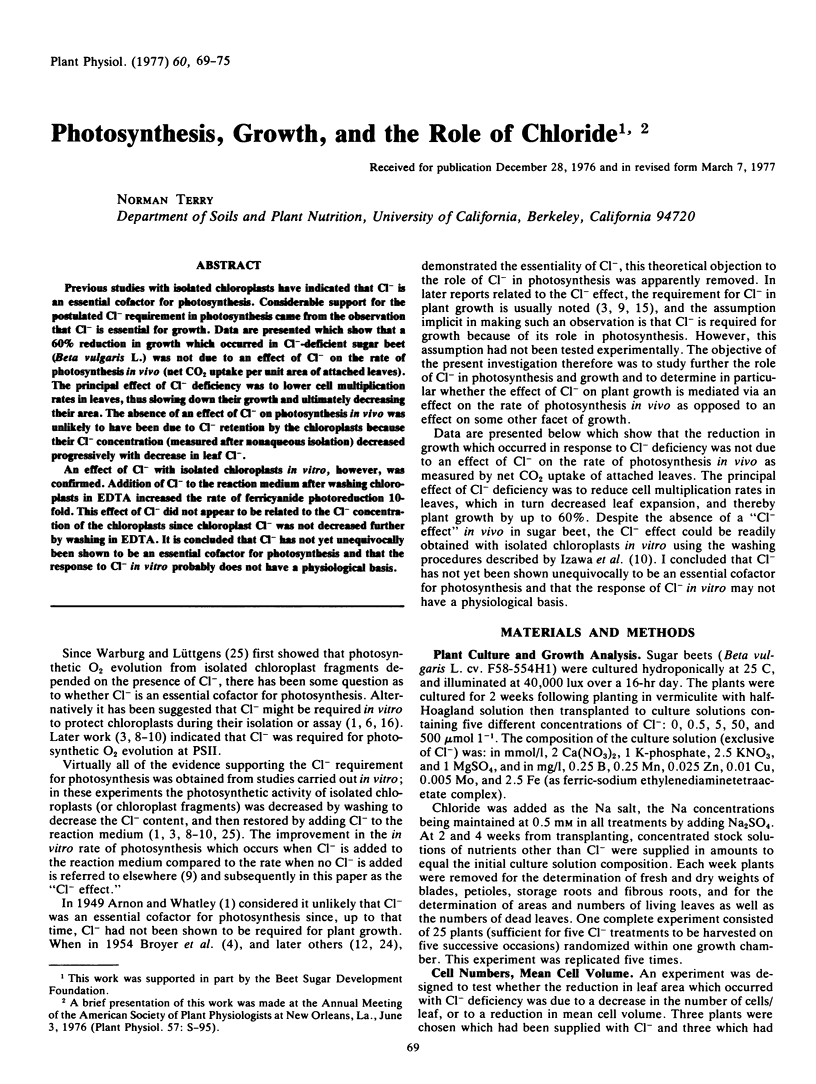
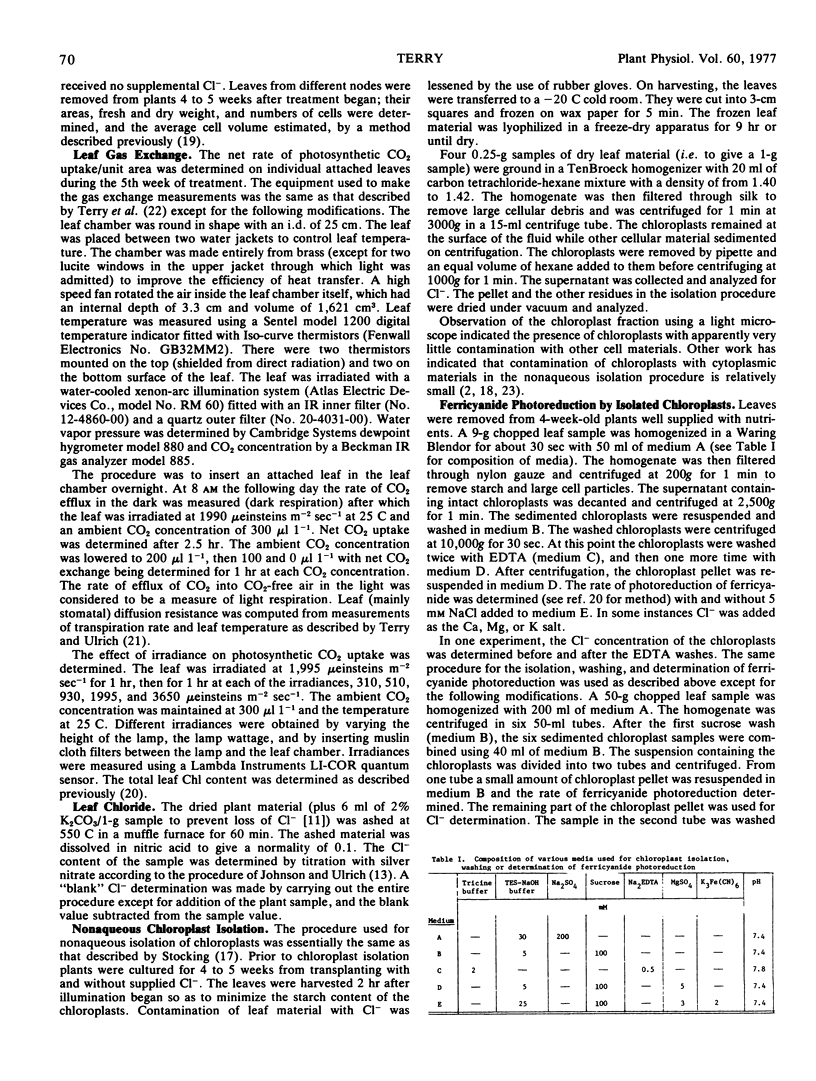

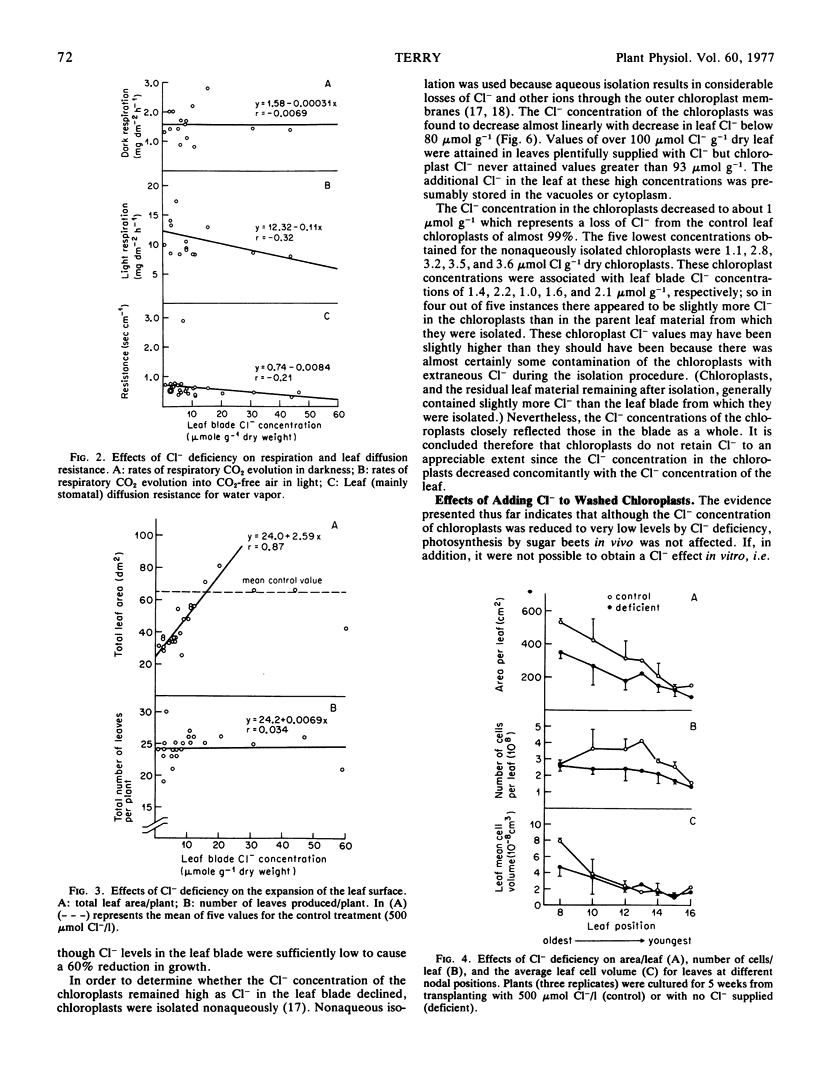
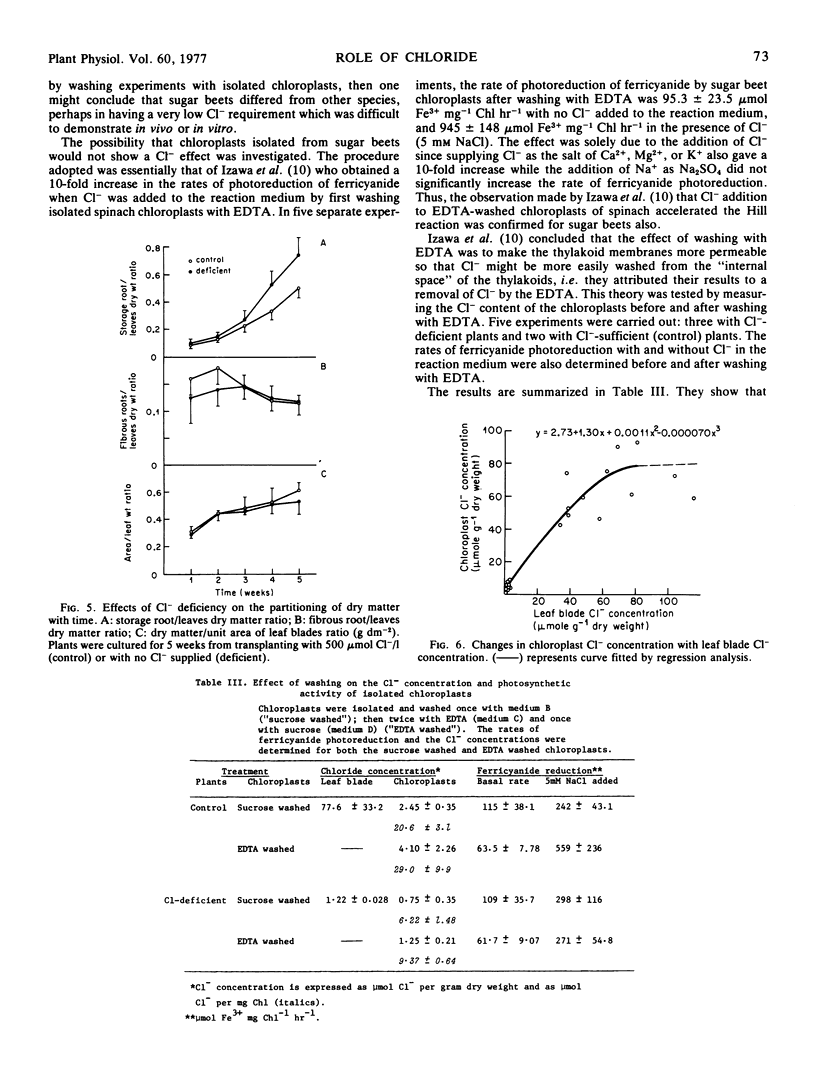
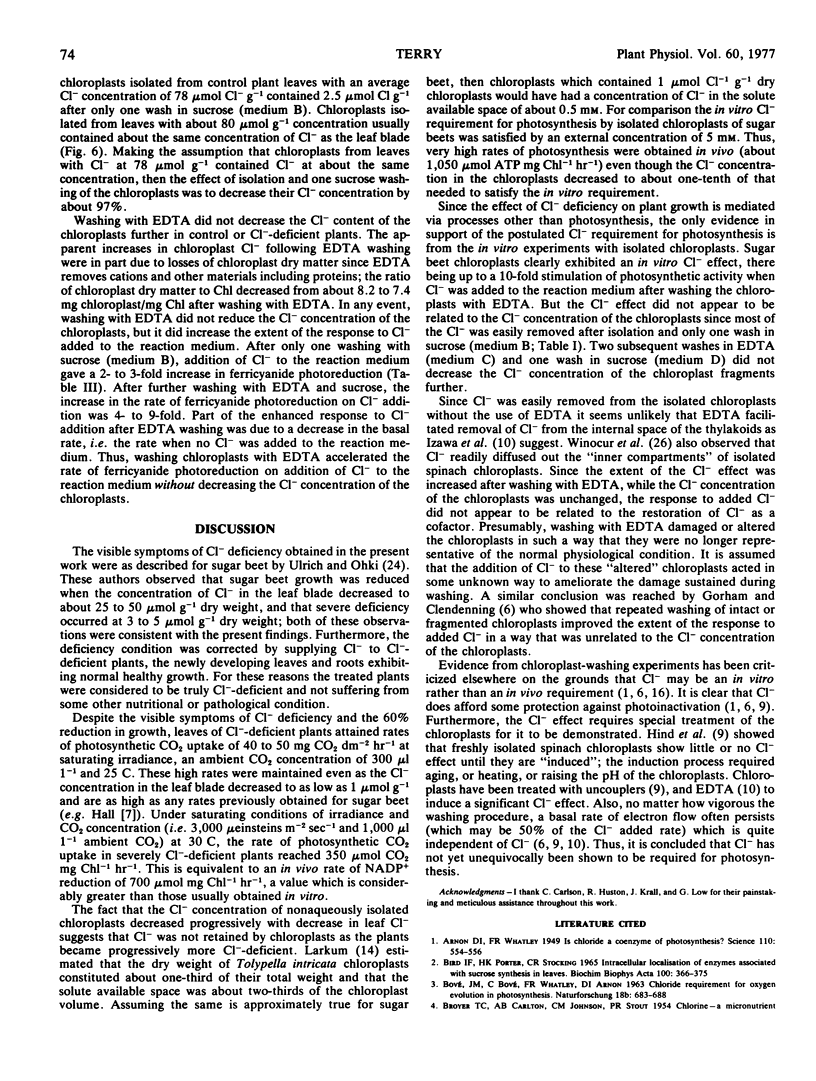
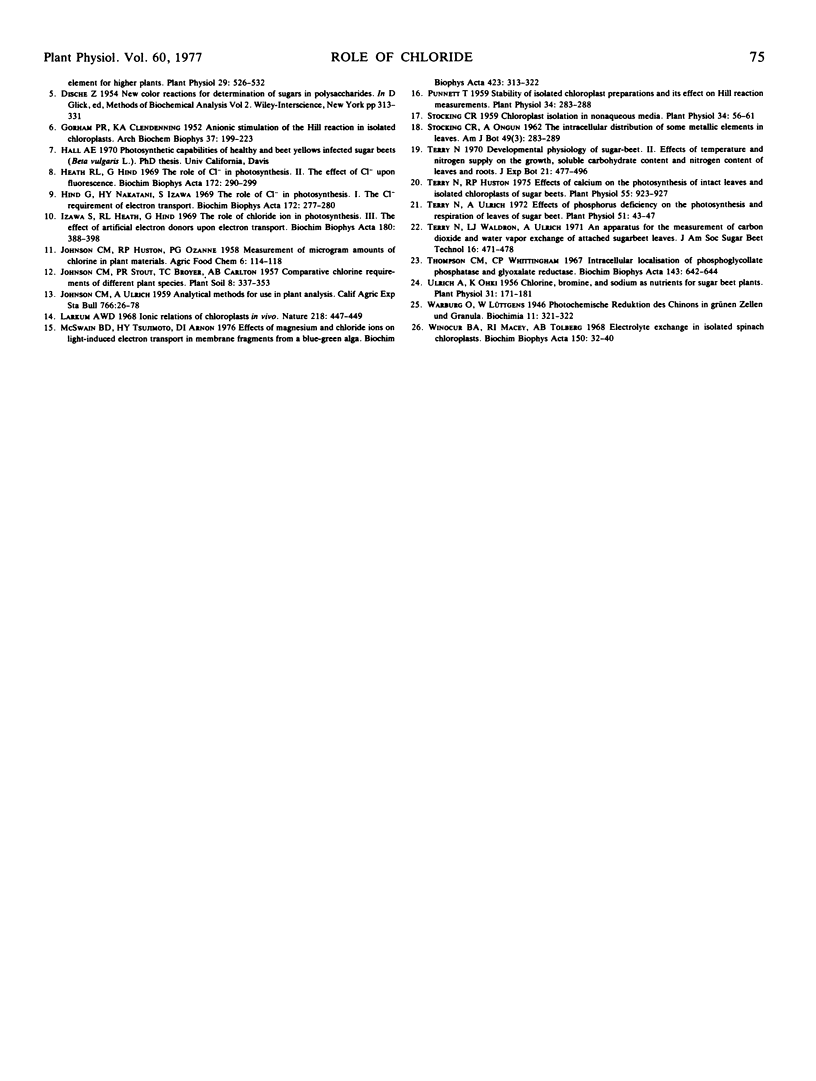
Selected References
These references are in PubMed. This may not be the complete list of references from this article.
- ARNON D. I., WHATLEY F. R. Is chloride a coenzyme of photosynthesis? Science. 1949 Nov 25;110(2865):554–556. doi: 10.1126/science.110.2865.554. [DOI] [PubMed] [Google Scholar]
- BIRD I. F., PORTER H. K., STOCKING C. R. INTRACELLULAR LOCALISATION OF ENZYMES ASSOCIATED WITH SUCROSE SYNTHESIS IN LEAVES. Biochim Biophys Acta. 1965 May 4;100:366–375. doi: 10.1016/0304-4165(65)90005-x. [DOI] [PubMed] [Google Scholar]
- Broyer T. C., Carlton A. B., Johnson C. M., Stout P. R. Chlorine-A Micronutrient Element for Higher Plants. Plant Physiol. 1954 Nov;29(6):526–532. doi: 10.1104/pp.29.6.526. [DOI] [PMC free article] [PubMed] [Google Scholar]
- DISCHE Z. New color reactions for determination of sugars in polysaccharides. Methods Biochem Anal. 1955;2:313–358. doi: 10.1002/9780470110188.ch11. [DOI] [PubMed] [Google Scholar]
- GORHAM P. R., CLENDENNING K. A. Anionic stimulation of the Hill reaction in isolated chloroplasts. Arch Biochem Biophys. 1952 May;37(1):199–223. doi: 10.1016/0003-9861(52)90179-3. [DOI] [PubMed] [Google Scholar]
- Heath R. L., Hind G. The role of Cl- in photosynthesis. II. The effect of Cl- upon fluorescence. Biochim Biophys Acta. 1969 Feb 25;172(2):290–299. doi: 10.1016/0005-2728(69)90071-1. [DOI] [PubMed] [Google Scholar]
- Hind G., Nakatani H. Y., Izawa S. The role of Cl- in photosynthesis. I. The Cl- requirement of electron transport. Biochim Biophys Acta. 1969 Feb 25;172(2):277–289. doi: 10.1016/0005-2728(69)90070-x. [DOI] [PubMed] [Google Scholar]
- Izawa S., Heath R. L., Hind G. The role of chloride ion in photosynthesis. 3. The effect of artificial electron donors upon electron transport. Biochim Biophys Acta. 1969 Jun 24;180(2):388–398. doi: 10.1016/0005-2728(69)90123-6. [DOI] [PubMed] [Google Scholar]
- Stocking C. R. Chloroplast Isolation in Nonaqueous Media. Plant Physiol. 1959 Jan;34(1):56–61. doi: 10.1104/pp.34.1.56. [DOI] [PMC free article] [PubMed] [Google Scholar]
- Terry N., Huston R. P. Effects of calcium on the photosynthesis of intact leaves and isolated chloroplasts of sugar beets. Plant Physiol. 1975 May;55(5):923–927. doi: 10.1104/pp.55.5.923. [DOI] [PMC free article] [PubMed] [Google Scholar]
- Thompson C. M., Whittingham C. P. Intracellular localisation of phosphoglycollate phosphatase and glyoxalate reductase. Biochim Biophys Acta. 1967;143(3):642–644. doi: 10.1016/0005-2728(67)90074-6. [DOI] [PubMed] [Google Scholar]
- Ulrich A., Ohki K. Chlorine, Bromine and Sodium As Nutrients for Sugar Beet Plants. Plant Physiol. 1956 May;31(3):171–181. doi: 10.1104/pp.31.3.171. [DOI] [PMC free article] [PubMed] [Google Scholar]
- Winocur B. A., Macey R. I., Tolberg A. B. Electrolyte exchange in isolated spinach chloroplasts. Biochim Biophys Acta. 1968 Jan 3;150(1):32–40. doi: 10.1016/0005-2736(68)90005-9. [DOI] [PubMed] [Google Scholar]


